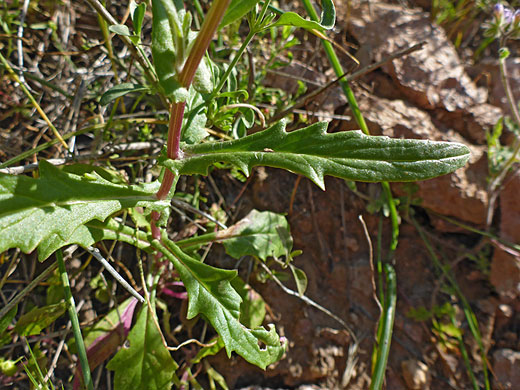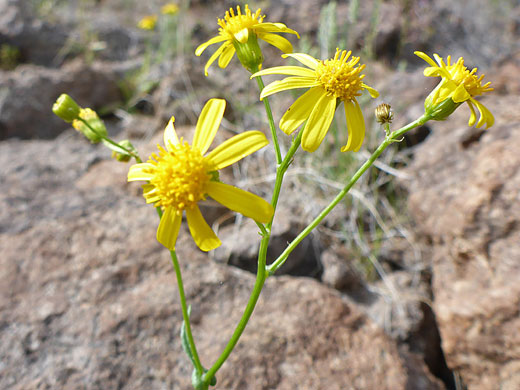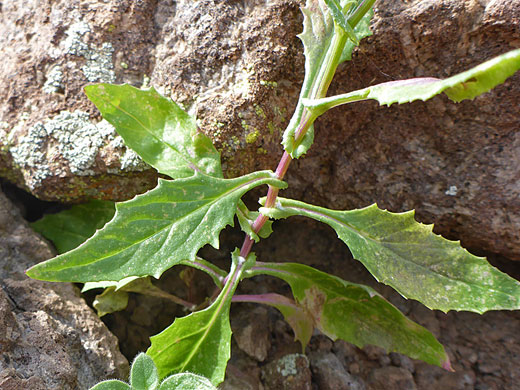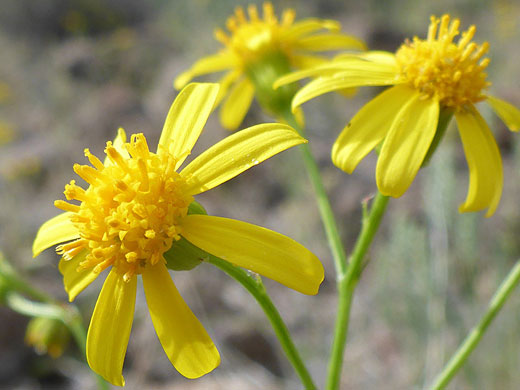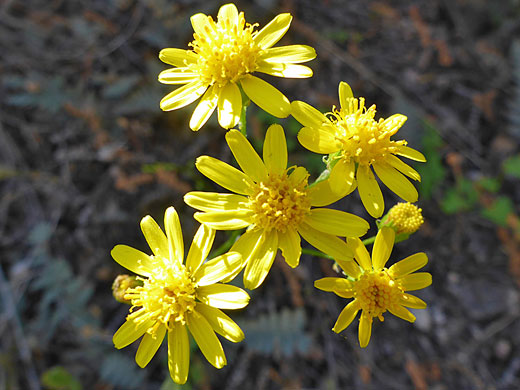
Yellow flowerheads of senecio lemmonii, along the Arch Canyon Trail in Organ Pipe Cactus National Monument, Arizona
Common names:
Lemmon's ragwort, Lemmon's butterweed
Family:
Scientific name:
Senecio lemmonii
Main flower color:
Range:
Arizona
Height:
Up to 3 feet
Habitat:
Rocky slopes in desert locations; 1,600 to 3,200 feet
Leaves:
Alternate, lanceolate to linear, up to 4 inches long and 1 inch across, with irregularly toothed edges
Season:
February to June
Stems of lenecio lemmonii are purplish near the ground, green higher up, and bear closely-spaced leaves at alternate intervals, clasping or heart-shaped at the base. Leaves have a pronounced midvein and fainter side veins, and are lined with sharp, irregular teeth. Plants are generally hairless, apart from little tufts of white hairs on the upper side of the leaf axils.
The inflorescence is an open, flat-topped cluster of 4 to 12 flowerheads, which have about 8 or 13 yellow ray florets (occasionally zero), and several dozen ray florets. The involucre is surrounded by 21 equal-length phyllaries, all green except for the very tips which are black. Below these are 3 to 5 (or more) thin, much shorter bractlets, generally not spreading. Flowerheads are about one inch in diameter, and the rays are relatively broad, and indented at the tip.
The inflorescence is an open, flat-topped cluster of 4 to 12 flowerheads, which have about 8 or 13 yellow ray florets (occasionally zero), and several dozen ray florets. The involucre is surrounded by 21 equal-length phyllaries, all green except for the very tips which are black. Below these are 3 to 5 (or more) thin, much shorter bractlets, generally not spreading. Flowerheads are about one inch in diameter, and the rays are relatively broad, and indented at the tip.
All Contents © Copyright The American Southwest | Comments and Questions | Contribute | Site Map

